Jurong Lake Gardens is Singapore’s national gardens in the heartlands. This 90-hectare green oasis, thoughtfully designed to unite families and communities, comprises Lakeside Garden, Chinese and Japanese Gardens, and Garden Promenade.
Lakeside Garden, together with the newly opened Chinese and Japanese Gardens are open to visitors and we invite you to explore their unique landscapes.
Discover the perfect blend of urban living and lush greenery at Jurong Lake Gardens - your community sanctuary in the heart of Singapore.
Lakeside Garden
Lakeside Garden is the 60-hectare western section of the Jurong Lake Gardens. Visitors can now enjoy the first phase of Singapore’s third national gardens, and the first national gardens in the heartlands. Lakeside Garden is centred around the themes of nature, play and the community. The garden has been developed sensitively to retain the serenity of the area whilst incorporating spaces for the community and recreational needs. Capitalising on its waterfront location, Lakeside Garden has spaces for all to enjoy amid nature, greenery and lakeside views. Visitors will have many opportunities to get close to nature in Lakeside Garden.
In line with the car-lite strategy of Jurong Lake District, the public is encouraged to walk, cycle or take public transport to the Gardens.
Chinese Garden
The rejuvenated Chinese Garden is where old meets the new, with familiar cultural landmarks that hold special memories, complemented by new attractions and diverse greenery.

Plan of Chinese Garden.
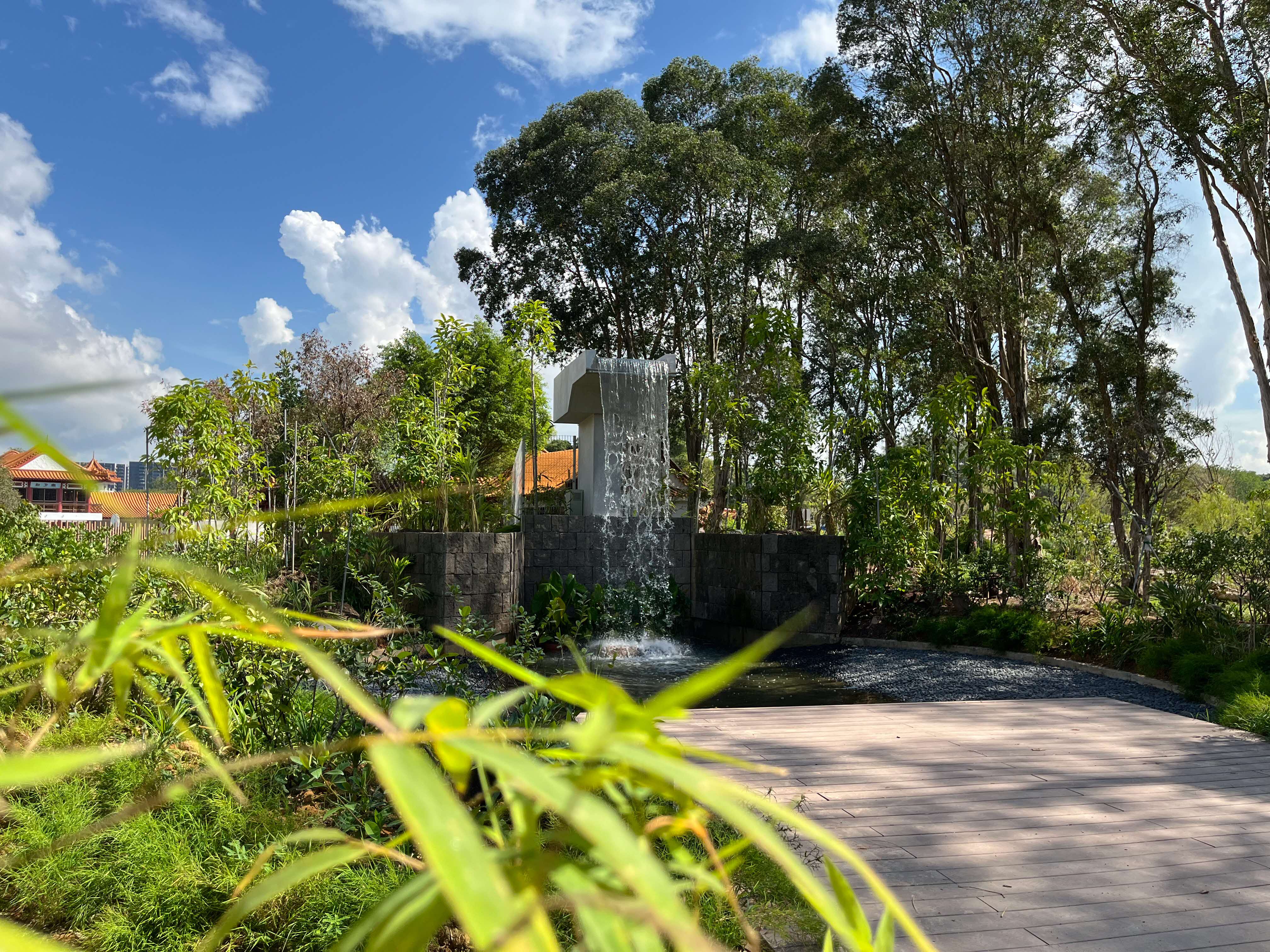
Embark on a Multi-Sensory Adventure as You Traverse the Enchanting Bamboo Grove
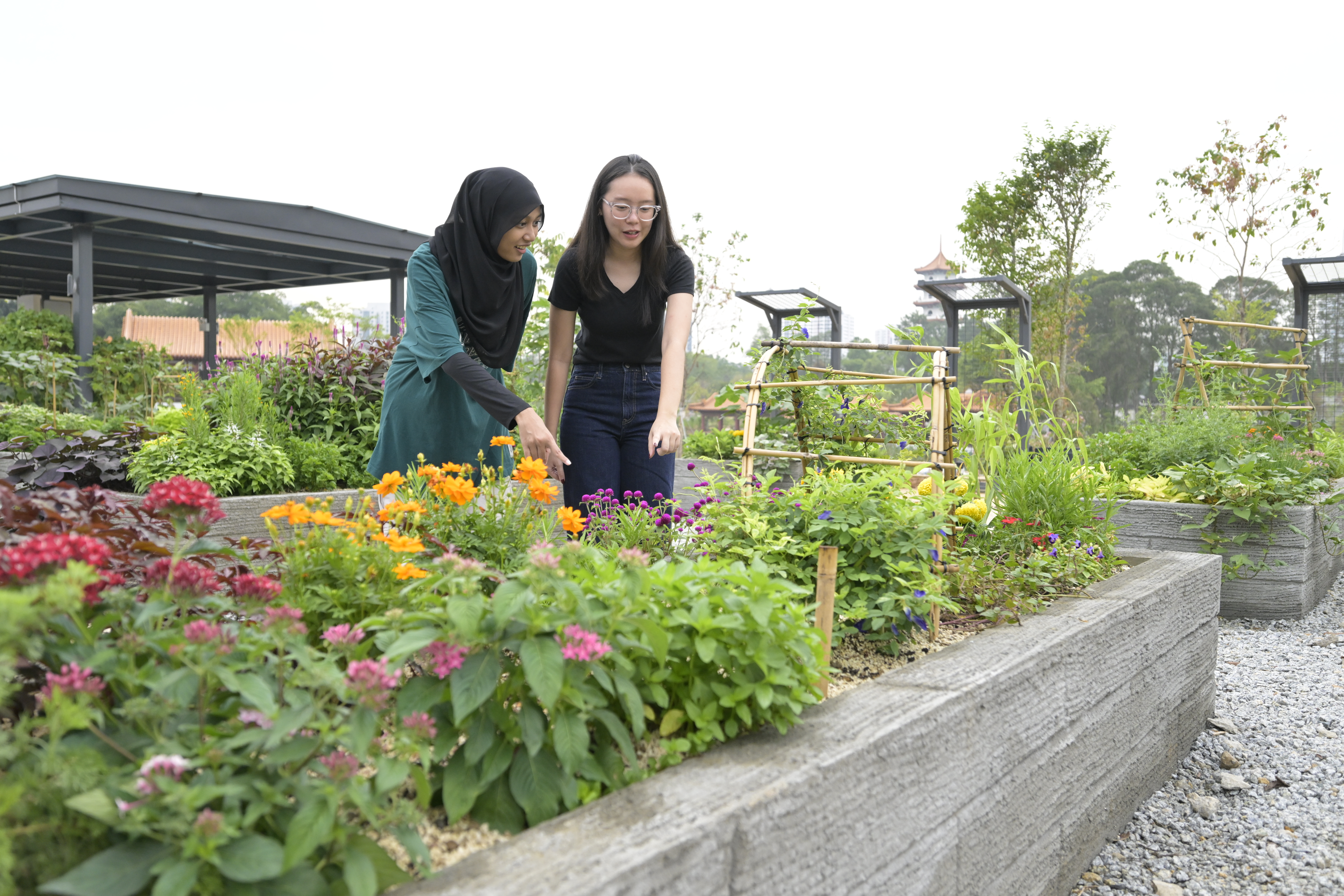
Urban Gardening in Bloom

Romantic Lakeside Views and Peaceful Retreats
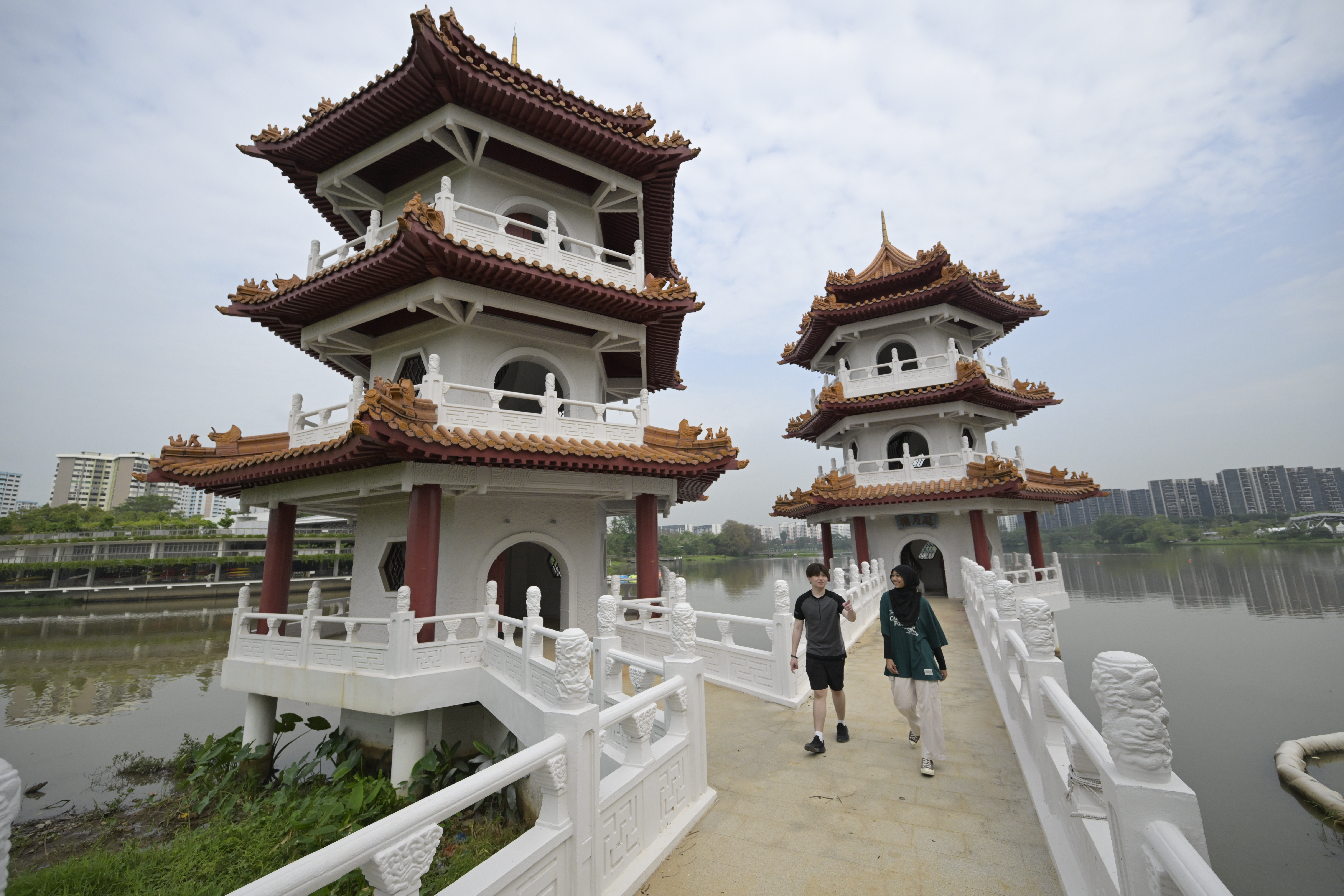
Chinese-inspired Towers with Lake Views and Spiral Staircases
Japanese Garden
There will be floral and aquatic gardens to showcase the colours of the tropics. A section of the Japanese Garden will be enhanced with a layer of tropical flora. Mature trees, including the Cycads planted by Japanese Emperor Akihito and Empress Michiko in 1970, will form part of the enhanced landscape. New bridges to the north and east of the island provide greater connectivity within the Gardens as well as to the greater Jurong Lake District.
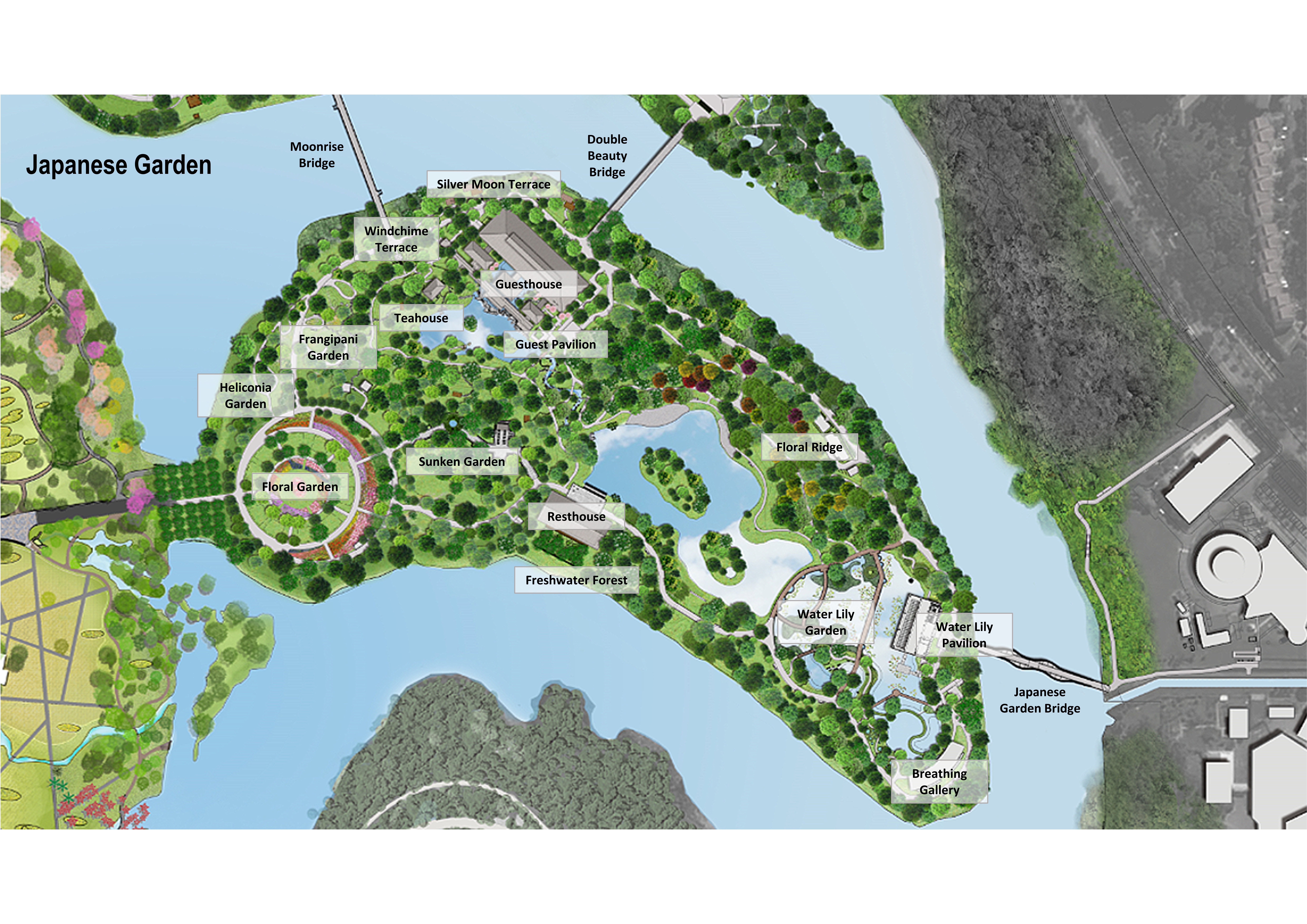
Map of Japanese Garden.

Singapore's Largest Water Lily Collection
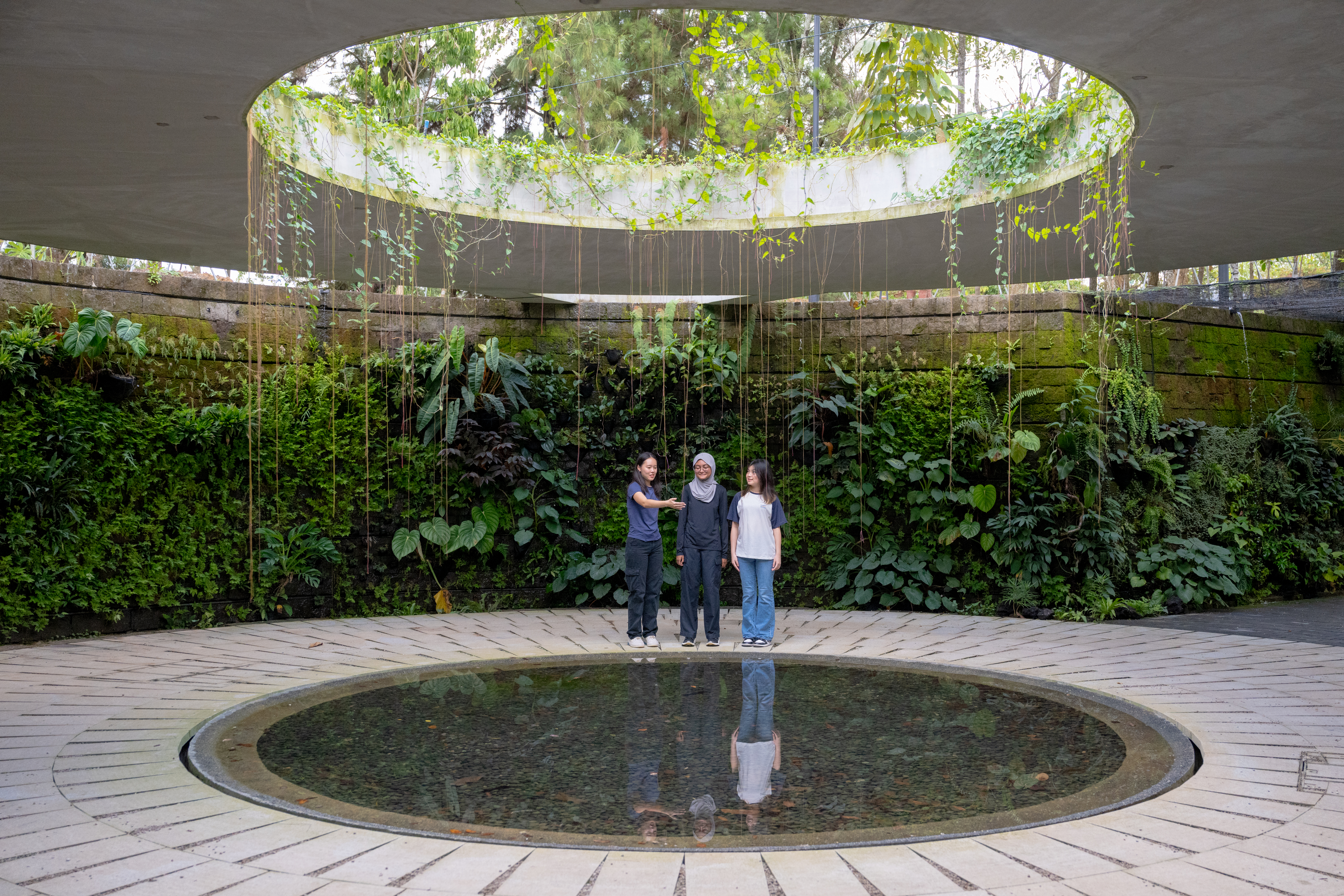
Vertical Epiphyte Walls Embrace Cave-inspired Water Feature Centrepiece
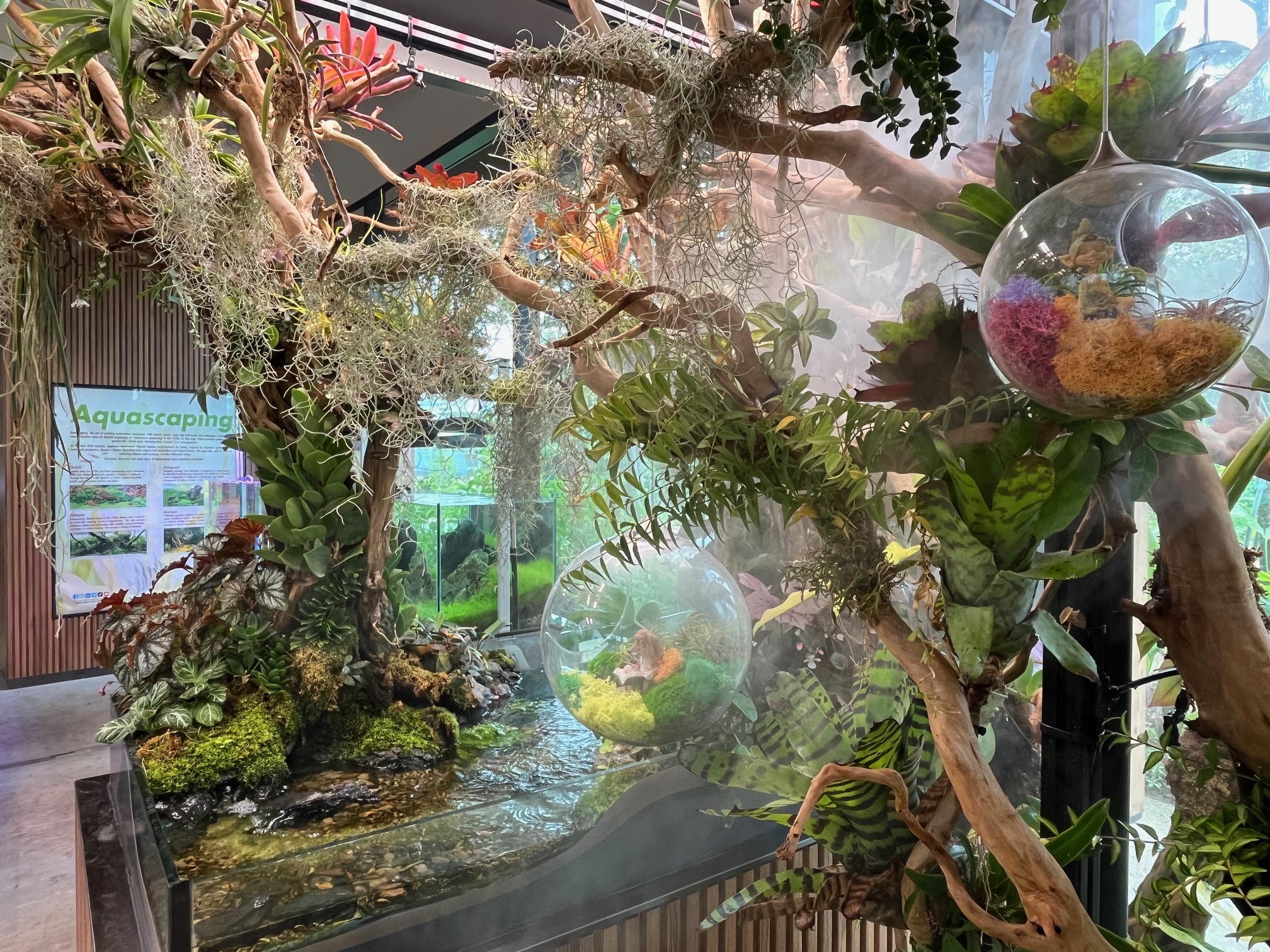
An Artistic Blend of Terrariums, Paludariums, And Aquariums
Jurong Lake Gardens is located within the larger Jurong Lake District, which is shaping up as a vibrant commercial district. Jurong Lake District will have two precincts:
• Jurong Gateway
• Lakeside
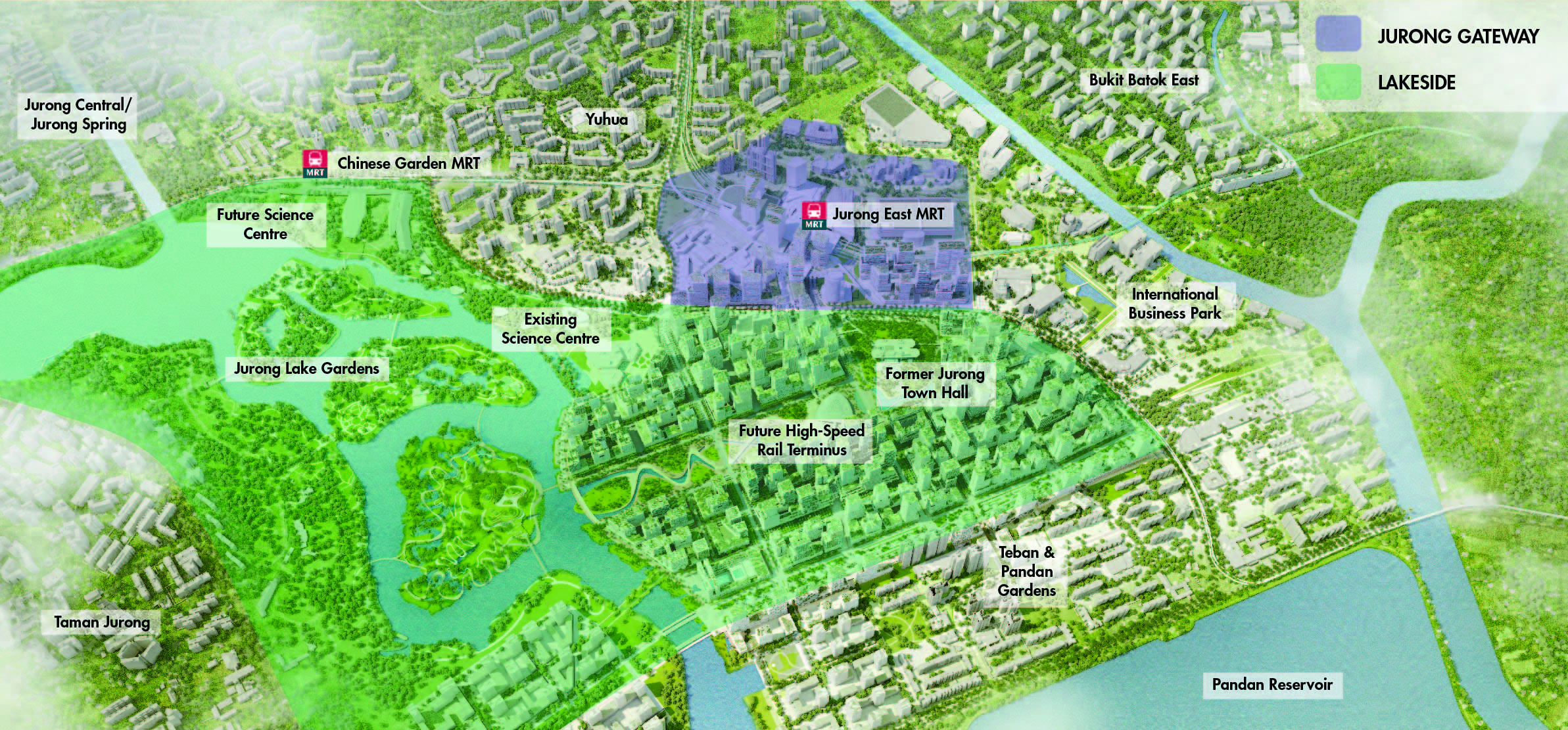
Jurong Lake Gardens contributes to the identity of Jurong Lake District, which is envisioned as a district of gardens and water. The green spaces and waterways will extend from the Gardens into the district. It will eventually comprise 100 hectares of green spaces, 70 hectares of water bodies and 17 km of waterfront areas for social and community activities, as well as spaces for recreation, retail and F&B outlets.
For more information, please visit jld.gov.sg.
Super Low Energy Buildings
In 2018, Building and Construction Authority (BCA) launched the new Green Mark scheme for Super Low Energy (SLE) and Zero Energy Buildings (ZEB). Jurong Lake Gardens aspires to be a showcase of sustainability. The Gardens took up the challenge of operating its main buildings with super low energy.
The Gardens also achieved the BCA Green Mark Platinum SLE in 2021.
Water systems
To promote climate resilience, water-sensitive urban designs have been incorporated in the Gardens. Being located around the lake, Jurong Lake Gardens has many features such as swales and bioretention basins to cleanse the water runoff from the rain. Rainwater is then collected in the inland ponds and harvested to water the plants within the Gardens. The water is also circulated through phytoremediation ponds and biotopes which consist of a series of cleansing cells containing sand beds that filter out particulate matter, helping to clean the water over time. The water in Clusia Cove has a closed loop water circulation system that links the cleansing biotope, water playground and eco-pond, ensuring water is constantly recycled, yet clean. These water systems help to maintain the water quality and prevent algal blooms.

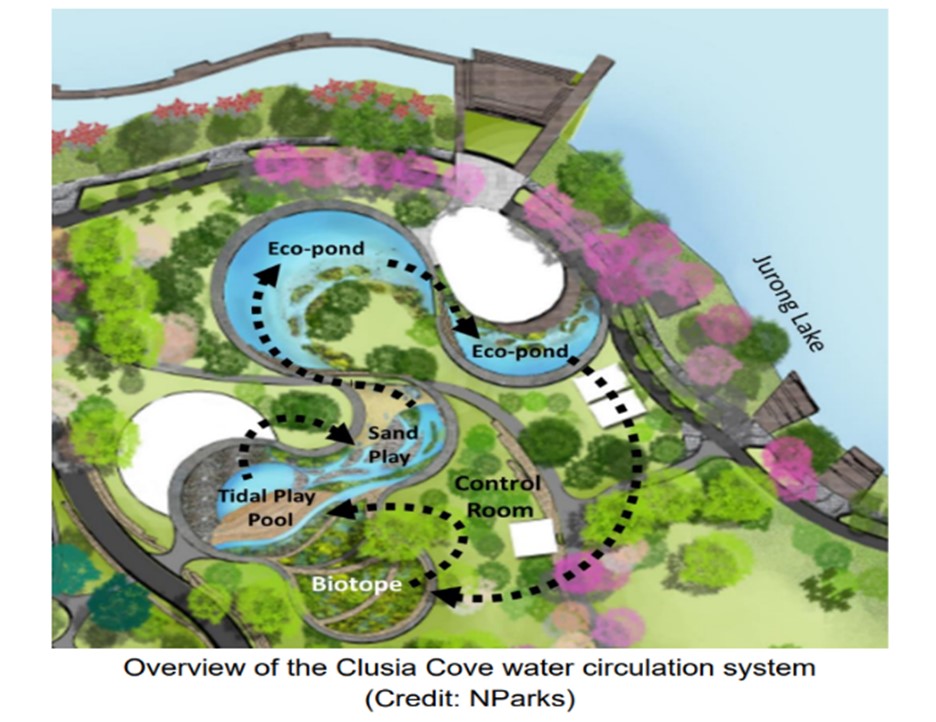
At Japanese Garden, a smart water management system has been implemented, which includes a water pump and filtration system that utilises natural vegetation and soil microbes to clean and restore the water within the Water Lily Garden and the larger Japanese Garden. This is supported by a donation of S$1 million by Micron Technology, through the Garden City Fund, NParks’ registered charity and IPC.

Carbon dioxide mineralised concrete
Nearly all the footpaths within the northern section of Lakeside Garden, as well as all the footpaths within Chinese and Japanese Gardens, are made of carbon dioxide mineralised concrete, which utilises a technology that recycles carbon dioxide by converting captured atmospheric carbon into a nanomineral that becomes permanently embedded in concrete structures. This improves the compressive strength of the concrete, while lowering carbon emissions during the construction process.
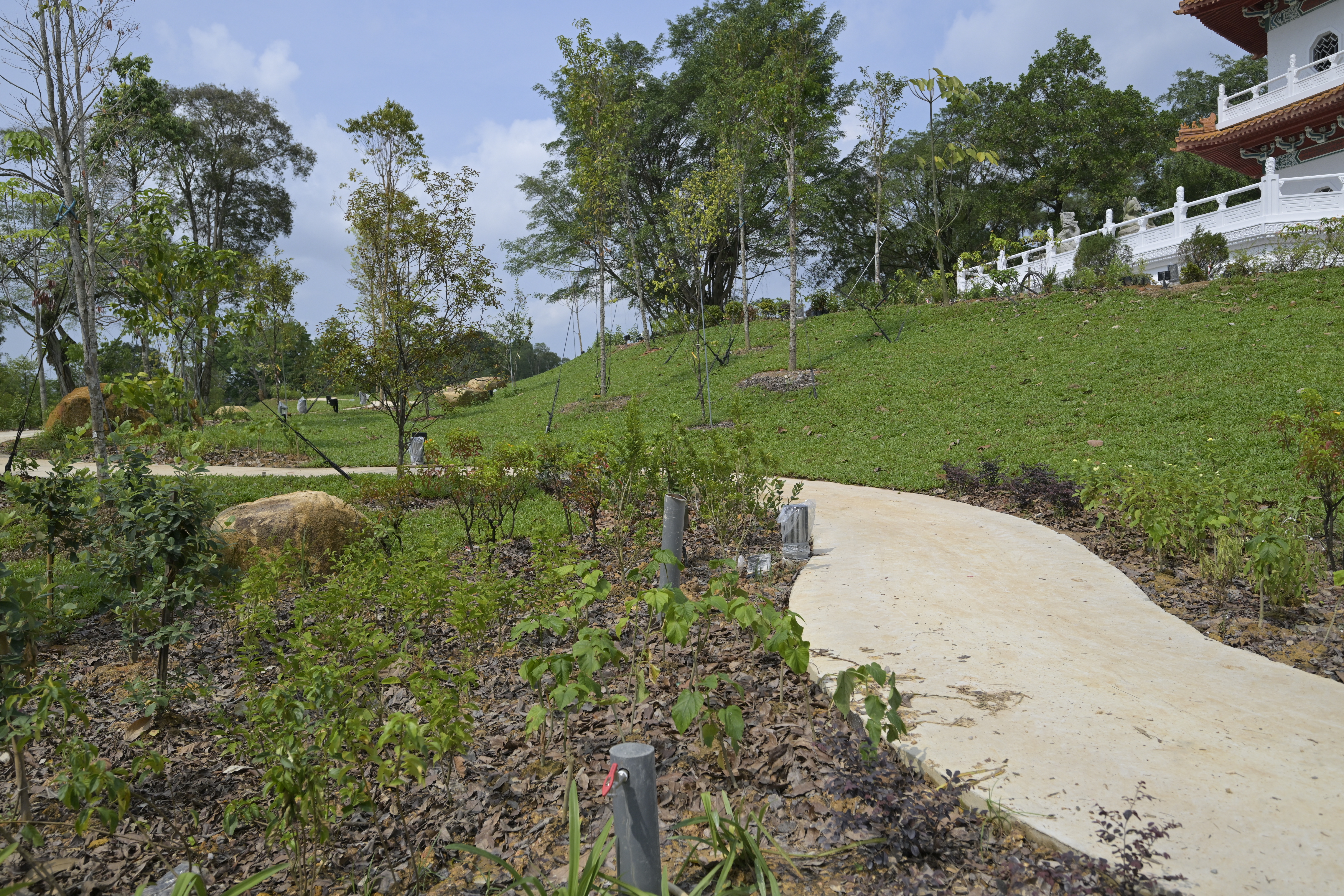
Integrated Management System
An Integrated Management System (IMS) will be implemented at Jurong Lake Gardens. IMS will aid in the monitoring and control of multiple systems in an automated and centralised manner. This is commonly used for buildings, where it is known as a Building Management System (BMS). This is the first time such a system is implemented in a park or garden. There are plans to eventually implement this across the Jurong Lake District and in various parks throughout Singapore.

Mass Engineered Timber
The Gardens will showcase a new method of construction using Mass Engineered Timber (MET), which is more sustainable and productive. MET comprises engineered wood products with improved structural integrity. The building components are prefabricated off-site and assembled on-site, thus reducing construction time and improving productivity. Its high strength-to- weight ratio makes it easier to handle than steel and concrete, allowing it to be installed more easily in a shorter amount of time. MET buildings can be built four times faster than a concrete building, with less noise, cranage and waste. MET can also help save on material use as it can be left exposed without the need for finishing material to be applied over it. The Guesthouse will be built in GLULAM (a type of MET) which has the unique capability to span large distances without the need for supporting columns. Other buildings that are built using MET include Rainforest Pavilion in Lakeside Garden and Water Lily Pavilion in Japanese Garden.
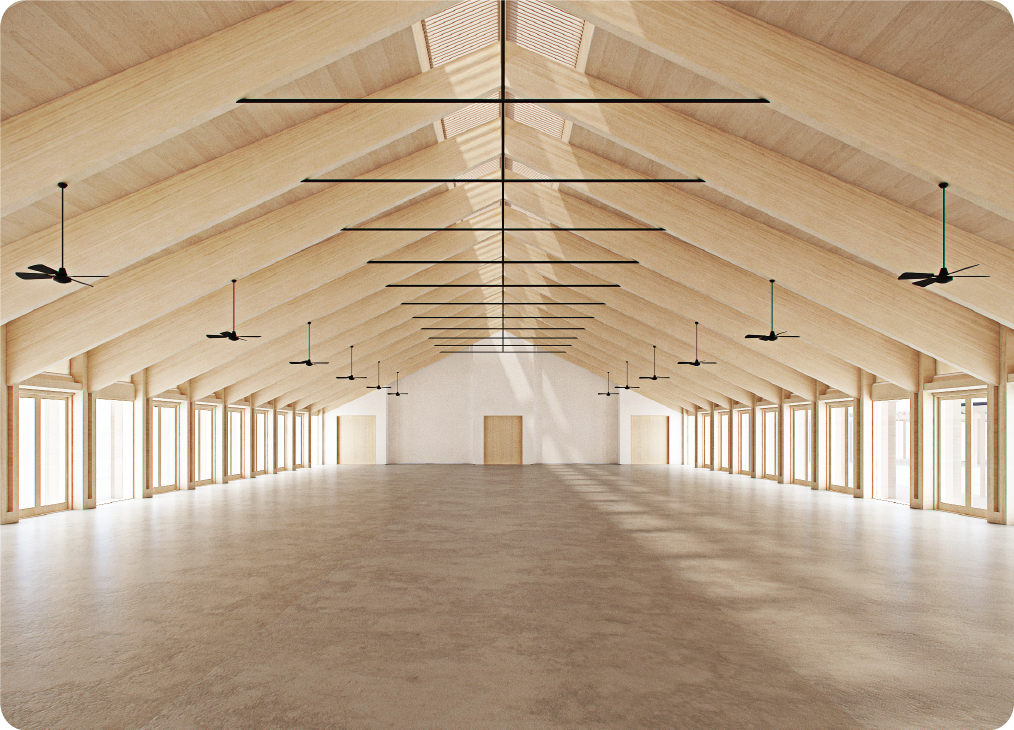
The interior of the Multi-Purpose Hall shows the beauty and functionality of MET.
Interactive Kiosk
Jurong Lake Gardens has brought technology into the Gardens through our Interactive Kiosks. The Interactive Kiosk is designed to provide visitors with their wayfinding needs. The kiosk directory showcases all the attractions in the Gardens, and provides an overview for visitors to plan their visit. The Interactive Kiosk also showcases the list of events happening around the Gardens, ranging from crafts for children to gardening workshops and guided walks. The Interactive Kiosks are situated at the following locations – Shelter at South Carpark, Gardenhouse, Entrance Pavilion and Play Pavilion.
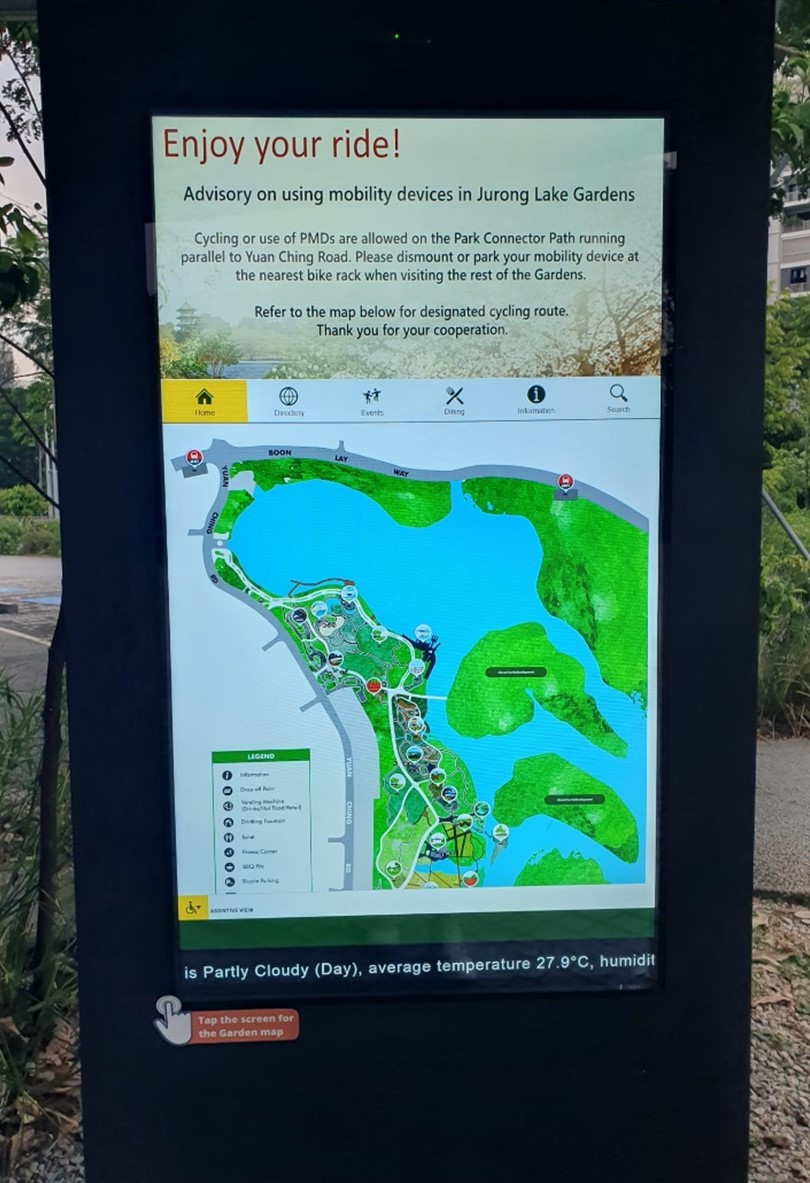
A close-up of one of the Interactive Kiosks.
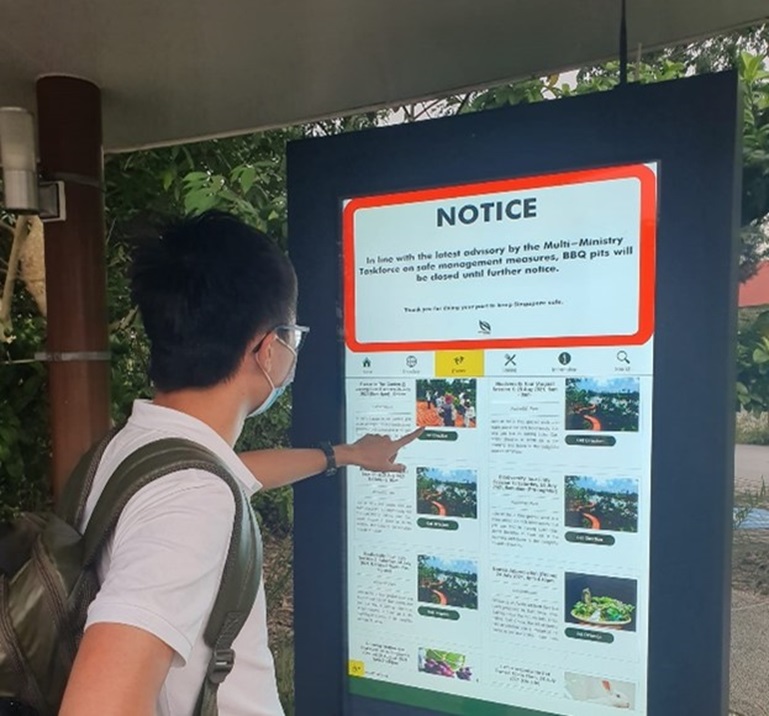
A visitor uses the Interactive Kiosk at the South Carpark Shelter.
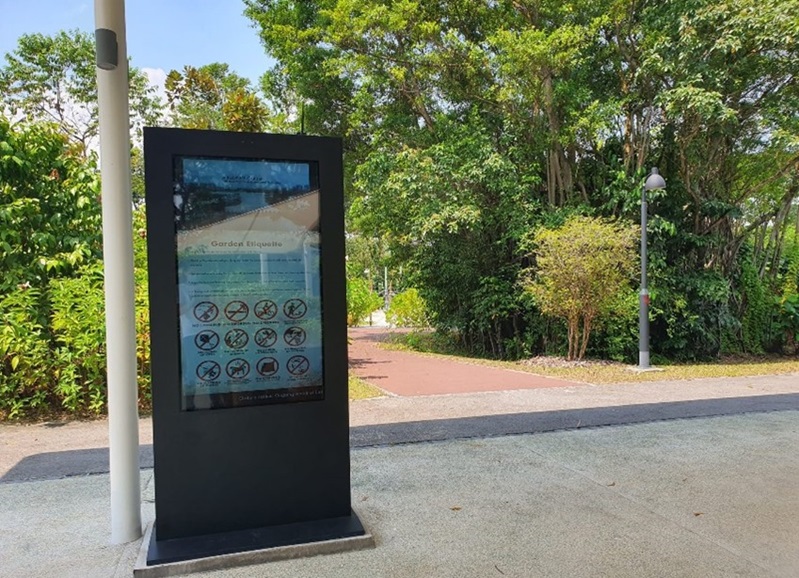
The Interactive Kiosk amongst nature at Forest Ramble.


